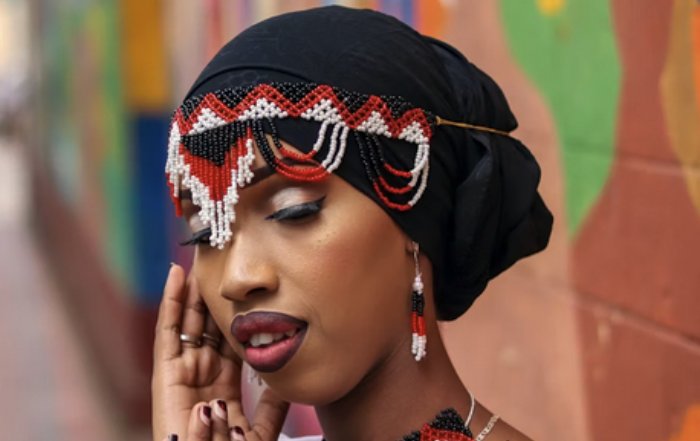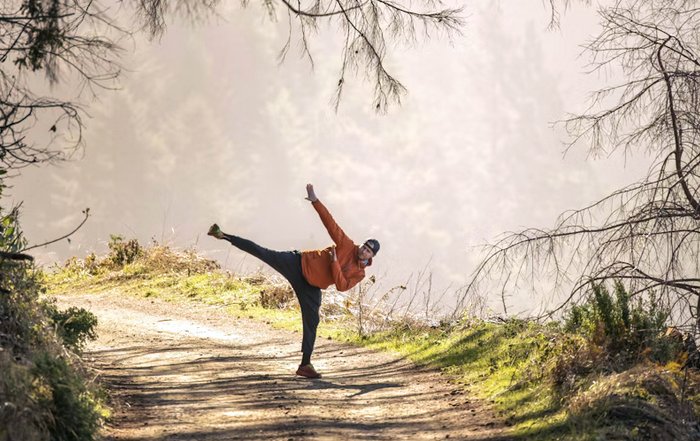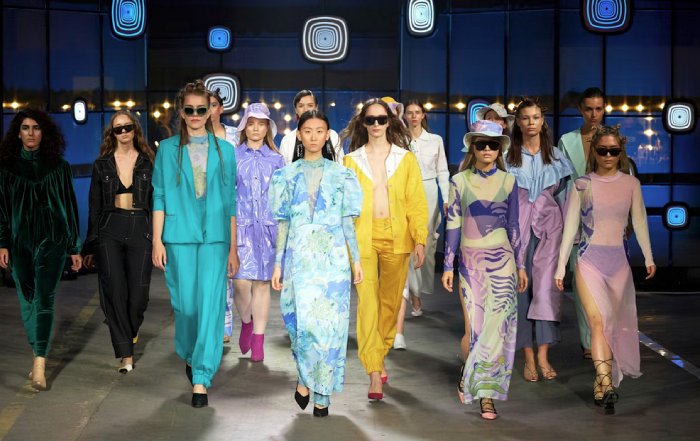The Power of Mindset in Everyday Women's Lives
Mindset as a Strategic Asset in Modern Women's Lives
By 2025, mindset has moved from being a vague self-help concept to a strategic asset shaping how women work, lead, learn, and live across every region of the world. In boardrooms from New York to Singapore, in creative studios in London and Berlin, in classrooms in Johannesburg and São Paulo, and in entrepreneurial hubs in Seoul and Sydney, women are increasingly recognizing that their inner narrative, emotional habits, and cognitive patterns directly influence their external results. For HerStage, whose global community spans careers, lifestyle, wellbeing, and leadership, mindset is no longer an abstract idea but a practical foundation for sustainable success, resilience, and fulfillment.
Psychologists and leadership researchers have long emphasized that the way individuals interpret challenges, failures, and opportunities is often more decisive than the objective circumstances themselves. Resources such as Harvard Business Review and American Psychological Association have consistently highlighted the role of cognitive framing, emotional regulation, and self-belief in high performance and wellbeing, while economic and social shifts over the past decade have made these insights especially urgent for women navigating complex, rapidly changing environments. At the same time, the rise of remote work, digital entrepreneurship, and global collaboration has made it clear that mindset is not only a personal wellbeing tool but also a business and career differentiator.
For women who look to HerStage for insight on career progression and leadership, the power of mindset is particularly relevant because it touches every dimension of their lives: how they negotiate, how they manage health and energy, how they build relationships, how they respond to bias, and how they define success on their own terms. Understanding mindset as a dynamic, trainable capability rather than a fixed personality trait is the first step toward intentionally shaping a life and career that align with individual values and ambitions.
Growth Mindset Versus Fixed Mindset in Women's Daily Realities
The distinction between a "growth mindset" and a "fixed mindset," popularized by psychologist Dr. Carol Dweck and discussed widely on platforms such as Stanford Graduate School of Business, has become a cornerstone of modern psychology and leadership development. A growth mindset is the belief that abilities, intelligence, and talents can be developed through effort, learning, and feedback, whereas a fixed mindset assumes that these capacities are largely innate and unchangeable. While this framework applies to everyone, it holds particular weight for women, who often encounter structural barriers, cultural expectations, and internalized doubt that can subtly reinforce fixed-mindset thinking.
Consider a woman in Germany or Canada who is transitioning from a specialist role into management. If she holds a fixed mindset and perceives leadership as a natural talent she either has or lacks, she may interpret early setbacks-such as difficult feedback, a challenging team dynamic, or a failed project-as evidence that she is "not a leader." In contrast, if she adopts a growth mindset, she is more likely to see these experiences as data for improvement, invest in targeted training, and seek mentorship from experienced leaders in her organization or external networks. Resources like MindTools explain how this shift in interpretation can dramatically alter long-term performance and confidence.
The same pattern appears in everyday situations ranging from learning new technologies to negotiating flexible work arrangements. Women in the United States or the United Kingdom facing rapid digital transformation in their industries may feel intimidated by emerging tools powered by artificial intelligence or data analytics. A fixed mindset can trigger avoidance, procrastination, or self-protection, whereas a growth mindset encourages experimentation, micro-learning, and strategic risk-taking. For the HerStage reader exploring self-improvement, this difference is not theoretical but immediately practical: it influences whether she signs up for an online course, asks a question in a meeting, or volunteers for a high-visibility project.
Importantly, adopting a growth mindset does not mean ignoring systemic obstacles such as pay gaps, bias, or unequal caregiving expectations, which are well documented by institutions like the World Economic Forum. Instead, it offers a psychological framework that allows women to acknowledge these realities while still believing in their capacity to learn, adapt, and exert influence over their own trajectory. This blend of realism and optimism is central to the mindset work that resonates with professional women across Europe, Asia, Africa, and the Americas.
Mindset in Leadership: From Imposter Syndrome to Executive Presence
In leadership contexts, mindset often surfaces through the lens of confidence, presence, and decision-making under pressure. Many women in senior roles across industries-from finance in Switzerland to tech in South Korea-describe experiencing imposter syndrome, the persistent feeling of being a fraud despite clear evidence of competence. Research highlighted by Dr. Valerie Young and platforms like MIT Sloan Management Review notes that imposter feelings are common among high achievers and are strongly linked to perfectionism and internalized expectations.
A leadership mindset grounded in self-trust and strategic self-awareness does not magically erase imposter thoughts, but it changes the relationship to them. Rather than interpreting doubt as proof of inadequacy, experienced leaders treat it as a sign that they are stretching into new territory, which aligns with growth-mindset principles. Many executives in the United States and Australia, for instance, use coaching, peer networks, and reflective practices to reframe internal narratives and strengthen their capacity to make bold decisions even in the presence of uncertainty.
The cultivation of executive presence, which is frequently discussed in business circles and on platforms like McKinsey & Company, also has a strong mindset component. Presence is not only about how someone speaks or dresses; it is deeply connected to how she perceives her own authority and value. A woman who believes her perspective is secondary to others in the room is likely to unconsciously minimize her contributions, whereas a woman who has consciously developed a leadership mindset is more inclined to articulate her ideas clearly, negotiate for resources, and set boundaries around her time and energy.
For HerStage readers interested in leadership development, this means that investing in skills such as strategic communication, negotiation, and conflict management must go hand in hand with cultivating a mindset that supports visibility and influence. Leadership programs that integrate cognitive and emotional training-such as mindfulness, self-reflection, and values clarification-tend to be more effective in sustaining behavioral change, a trend documented by organizations like the Center for Creative Leadership.
Mindset, Health, and Sustainable Performance
Mindset has a profound impact on physical and mental health, which in turn shapes performance, creativity, and long-term career sustainability. Women across the world frequently balance professional responsibilities with caregiving, community roles, and personal aspirations, creating a level of cognitive and emotional load that can easily lead to burnout if not managed intentionally. Health organizations such as the World Health Organization have noted rising rates of stress and anxiety, particularly among working women, in the aftermath of global crises and ongoing economic uncertainty.
A health-supportive mindset involves recognizing that energy, rest, and emotional wellbeing are not indulgences but essential resources for high performance. In practice, this translates into reframing beliefs such as "I must always be available" or "Taking time off means I am not committed" into more sustainable narratives like "Rest is a strategic investment" and "Boundaries allow me to deliver my best work." For women in demanding roles in cities like London, New York, Singapore, and Johannesburg, this mental shift often precedes practical changes in schedule design, delegation, and self-care routines.
The connection between mindset and health is further reinforced by research on the placebo effect, stress responses, and the impact of expectations on physical outcomes, explored by institutions like Mayo Clinic. While mindset is not a substitute for medical care, it can influence adherence to treatment, motivation to exercise, and the ability to sustain healthy habits. For the HerStage audience exploring health and wellbeing, understanding this relationship empowers women to approach wellness not as a series of isolated tasks but as an integrated mindset of long-term stewardship of their bodies and minds.
Mindfulness practices, which have been widely studied and promoted by organizations such as Mindful.org, offer practical tools for cultivating a calmer, more focused, and more resilient mindset. Techniques such as breath awareness, body scans, and non-judgmental observation of thoughts help women in high-pressure environments-from corporate law in Canada to healthcare in France-interrupt reactive patterns and respond more intentionally to stressors. When combined with strategic time management and clear priorities, this mindset work supports sustainable performance rather than short-term overextension.
Mindset, Lifestyle, and Identity in a Global Context
Beyond work and health, mindset shapes how women curate their lifestyles, aesthetic choices, and daily rituals, influencing everything from fashion and beauty to food and travel. In an increasingly interconnected world, women in cities like Paris, Milan, Tokyo, and São Paulo are exposed to a continuous stream of images, standards, and expectations through social media and digital platforms. The mindset with which they interpret these inputs determines whether they experience them as inspiration, pressure, or a mix of both.
A self-directed lifestyle mindset encourages women to define beauty, glamour, and success on their own terms rather than purely through external comparison. This approach is particularly important in a digital era where curated images can easily distort perceptions of reality, a phenomenon examined by researchers and discussed by organizations such as the Royal Society for Public Health. For HerStage, which covers lifestyle, beauty, glamour, and fashion, the conversation around mindset involves helping readers view style and self-presentation as expressions of identity and creativity rather than rigid standards to be met.
Food and nutrition provide another lens on mindset. Women in diverse cultures-from Mediterranean diets in Italy and Spain to plant-forward trends in the United States and Australia-often carry inherited beliefs about what they "should" or "should not" eat, sometimes shaped by diet culture and sometimes by family traditions. A more empowered mindset views food as nourishment, connection, and enjoyment rather than as a constant moral test. Public health resources such as National Institutes of Health and NHS emphasize the importance of balanced, sustainable eating patterns over restrictive, short-term diets, and this evidence-based perspective aligns with a mindset that prioritizes long-term wellbeing. For readers exploring food and lifestyle choices, mindset becomes the quiet but powerful filter that determines whether nutritional guidance becomes a source of stress or a supportive framework.
In many parts of the world, lifestyle choices are also shaped by economic realities, social norms, and urban design. Women in emerging cities in Asia, Africa, and South America may face different constraints and opportunities than those in established European or North American hubs, yet the underlying mindset principles remain consistent: clarity about values, intentional decision-making, and the willingness to adapt as circumstances evolve. This global perspective is central to HerStage, which serves a readership that spans continents and cultural contexts while sharing a common interest in purposeful, modern living.
Mindset and Continuous Learning in the Age of Transformation
The rapid evolution of technology, business models, and global markets has made continuous learning a non-negotiable element of career resilience. Women in fields as diverse as fintech in the Netherlands, creative industries in Sweden, renewable energy in Denmark, and education in South Africa are encountering new tools, regulations, and expectations at an unprecedented pace. A learning-oriented mindset transforms this environment from a source of anxiety into a field of opportunity.
Educational and workforce organizations such as UNESCO and the OECD have emphasized lifelong learning as a cornerstone of inclusive growth, and this principle applies directly to individual careers. Women who view their skills as dynamic and updateable are more likely to seek out training, experiment with new roles, and pivot when industries shift. For readers exploring education and personal growth, the mindset shift lies in moving from "I need to know everything before I start" to "I can begin with what I know and learn the rest along the way."
Digital platforms have expanded access to high-quality learning resources, from coding bootcamps and leadership programs to creative workshops and language courses. Sites like Coursera and edX offer women in countries from Brazil to Japan the ability to learn from leading universities and industry experts without relocating or interrupting their careers. However, the decision to enroll, persist, and apply new knowledge still depends on mindset factors such as self-efficacy, time management beliefs, and tolerance for being a beginner again.
For HerStage, which regularly explores themes of self-improvement and guidance, the narrative around learning emphasizes both strategic upskilling and deeper intellectual curiosity. Women who adopt a growth-oriented learning mindset are more likely to experiment beyond their immediate professional needs, exploring topics such as art, history, philosophy, or sustainability, which enrich their perspectives and often indirectly enhance their leadership and creativity. This broader intellectual engagement is increasingly recognized by business leaders and institutions like World Bank as critical for innovation and ethical decision-making in a complex world.
Mindset, Career Design, and Financial Empowerment
Career paths in 2025 are less linear than in previous generations, with more women blending employment, entrepreneurship, freelancing, and portfolio careers across borders and industries. A strategic career mindset views this fluidity not as chaos but as a canvas for intentional design. Women in the United States, United Kingdom, Singapore, and beyond are increasingly engaging in career design exercises, mapping their skills, values, and interests against market trends to craft roles that align with both financial goals and personal fulfillment.
Financial empowerment is a central component of this mindset. Organizations such as Ellevest and Female Founders Fund, frequently profiled by business media like Forbes, highlight how women who actively manage their finances, investments, and negotiation strategies create greater autonomy and resilience. However, the decision to ask for a raise, launch a side business, or invest in a new venture is often constrained not by information alone but by beliefs about worthiness, risk, and capability. A proactive financial mindset reframes money from a source of anxiety or taboo into a tool for choice and impact.
The entrepreneurial mindset has also become more visible among women across Europe, Asia, Africa, and the Americas. Whether launching a tech startup in South Korea, a sustainable fashion label in France, or a wellness consultancy in South Africa, women entrepreneurs frequently emphasize the importance of resilience, adaptability, and long-term vision. Startup ecosystems and accelerators, discussed on platforms like TechCrunch, consistently note that founders who can reinterpret setbacks, manage uncertainty, and stay anchored to their mission are more likely to navigate the volatility of early-stage ventures.
For readers exploring business and career strategy, mindset becomes the invisible infrastructure underlying visible achievements: it influences how women respond to investor feedback, how they price their services, how they handle rejection, and how they balance ambition with wellbeing. This is particularly relevant in global markets where gender norms, access to capital, and regulatory environments vary widely, requiring a combination of realism, creativity, and inner steadiness.
Mindfulness, Inner Narrative, and Everyday Decisions
Mindfulness and mindset are closely linked, especially in the context of everyday decision-making. Mindset shapes the stories women tell themselves about who they are and what is possible, while mindfulness provides the tools to observe and, when necessary, rewrite those stories. In fast-paced environments in cities like Toronto, Amsterdam, Bangkok, and Nairobi, the ability to pause, reflect, and choose a response rather than react automatically becomes a competitive advantage in both professional and personal spheres.
Practices such as journaling, meditation, and reflective walks, often recommended by wellbeing experts and platforms like Greater Good Science Center, enable women to surface underlying beliefs and patterns that drive their behavior. For instance, a woman who notices that she consistently downplays her achievements in meetings might uncover a belief that "staying small is safer," which once served a purpose but now limits her leadership potential. Through deliberate mindset work, she can replace this belief with a more empowering narrative aligned with her current goals and values.
HerStage's focus on mindfulness and inner growth intersects with this practice-based approach. Readers are increasingly interested not only in high-level concepts but in practical rituals they can integrate into busy lives, whether they are managing teams, raising families, or building businesses. The global conversation on mental health, supported by organizations such as Mental Health Foundation, has reduced some of the stigma around seeking support, and many women now combine personal practices with professional resources such as therapy or coaching to deepen their mindset transformation.
On a micro level, mindset influences countless small choices each day: whether to speak up in a meeting, whether to allocate time for exercise, whether to say no to an extra commitment, whether to pursue a new opportunity in another country. Over time, these decisions accumulate into a trajectory. Recognizing this cumulative effect encourages women to treat mindset work not as a one-time project but as an ongoing discipline, integrated into the fabric of daily life.
The Role of Community and Platforms like HerStage
While mindset is deeply personal, it is also profoundly social. Beliefs, expectations, and internal narratives are shaped by the communities, media, and role models that surround women. Platforms like HerStage play a significant role in this ecosystem by curating stories, insights, and resources that normalize ambition, authenticity, and multidimensional lives for women across continents. When readers see leaders, creators, and professionals from diverse backgrounds and regions-from the United States and United Kingdom to Malaysia, Finland, and Brazil-sharing both their achievements and their mindset journeys, they gain evidence that growth, reinvention, and self-defined success are possible.
Global organizations such as UN Women, whose work is highlighted on UN Women's official site, emphasize that representation and narrative power are integral to gender equality. Media and digital platforms that center women's voices contribute to shifting collective mindsets about what women can and should do in business, politics, science, and the arts. For HerStage, this means not only reporting on external achievements but also illuminating the inner work-the doubts, reframes, and mindset shifts-that underpin visible milestones.
Community also offers accountability and support. Women who engage with like-minded peers, mentors, and networks are more likely to sustain mindset changes over time, especially when navigating transitions such as international moves, career pivots, or family milestones. Professional associations, alumni groups, and digital communities, including those highlighted by organizations like Lean In, provide spaces where women can practice new behaviors, receive constructive feedback, and share strategies for maintaining a growth-oriented perspective in the face of real-world constraints.
Within the HerStage ecosystem, content spanning women's stories and achievements, career and leadership, lifestyle and wellbeing, and global perspectives offers a multi-dimensional view of mindset in action. This integrated approach reflects the reality that women's lives do not fit neatly into silos: leadership decisions affect health; lifestyle choices influence career energy; educational investments shape business opportunities; and inner narratives thread through every domain.
Looking Ahead: Mindset as a Long-Term Advantage
As the world moves deeper into an era defined by technological disruption, demographic shifts, and evolving social norms, the power of mindset in everyday women's lives will only grow more significant. Skills, tools, and market conditions will continue to change, but the capacity to interpret, adapt, and act with intention will remain a durable advantage. For women from New York to Nairobi, Berlin to Bangkok, Sydney to São Paulo, the question is not whether challenges will arise, but how they will meet them internally and externally.
For HerStage and its global audience, mindset is not a trend but a long-term foundation for living, leading, and creating with purpose. It is the quiet force behind strategic career moves, the steady anchor in health and wellbeing, the creative spark in lifestyle and fashion, and the resilient core in times of uncertainty. By treating mindset as a skill that can be learned, refined, and supported through community, women everywhere can expand their sense of possibility and design lives that reflect both their ambitions and their deepest values.
In this evolving landscape, the most powerful shift may be the simplest: moving from the belief that life happens to them, to the conviction that, within real-world constraints and complexities, they have meaningful agency in shaping their paths. That conviction-rooted in experience, informed by expertise, and strengthened by trustworthy guidance-is the essence of mindset, and it will continue to define the stories of women who step onto their own stage, every day, in every part of the world.










